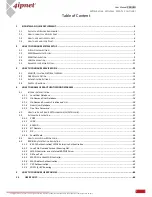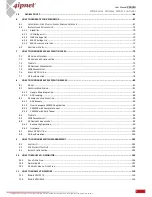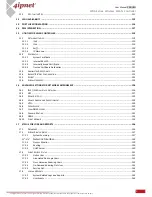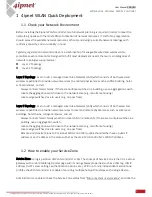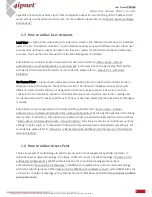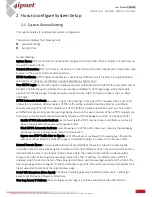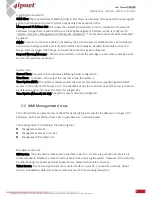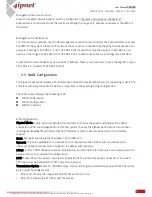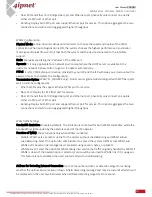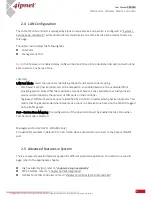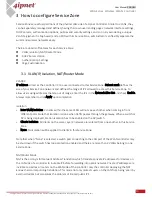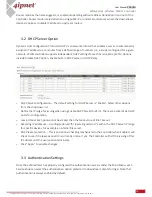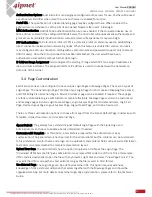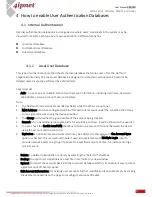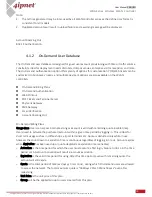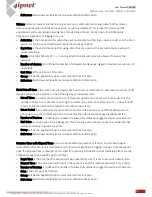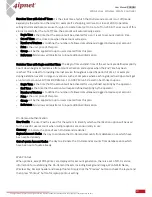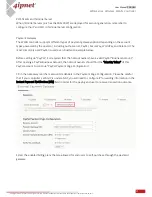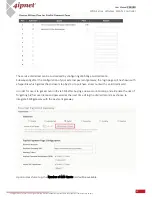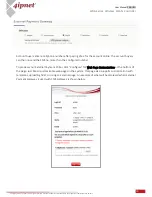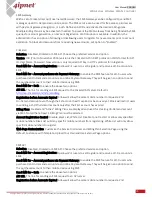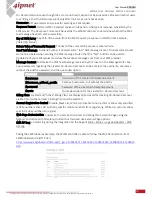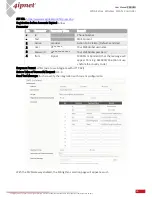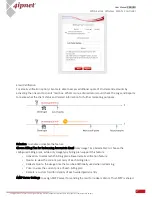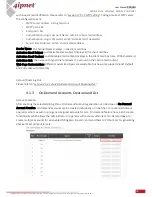
13
User Manual ENGLISH
WHG-Series Wireless WLAN Controller
Copyright © 2017, 4ipnet, Inc. All rights reserved. All other trademarks mentioned are the property of their respective owners.
3
How to configure Service Zone
Service Zones are virtual partitions of the physical LAN side of a 4ipnet Controller. Similar to VLANs, they
can be separately managed and defined, having their own user landing pages, network interface settings,
DHCP servers, authentication options, policies and security settings, and so on. By associating a unique
VLAN Tag (when it is tag-based) and an SSID with its Service Zone, administrator can flexibly separate the
wired and wireless networks easily.
There are dozens of features for each Service Zone
VLAN, Isolation, NAT/Router Mode
DHCP Server Option
Authentication Settings
Page Customization
3.1
VLAN/IP, Isolation, NAT/Router Mode
VLAN/IP
IP address will act as the Controller IP to a user connected to this Service Zone. Subnet mask defines the
size of your Service Zone network and defines the range of IP’s allowed to access this Service Zone. To
allow users using addresses that are out of range, enter the IP’s in the Network Alias List and check Enable.
Always remember to click Apply upon completion.
Isolation
-
Inter-VLAN Isolation: 2 clients within the same VLAN will not see each other when coming in from
different ports. Note that Isolation is done when traffic passes through the gateway. When a switch or
AP is being deployed, Station Isolation has to be enabled on the AP/switch.
-
Clients Isolation: All clients on the same Layer 2 network are isolated from one another in this Service
Zone.
-
None: No isolation will be applied to clients in this Service Zone.
Note that when “None” is selected, a switch port connecting to the LAN port of the WLAN controller may
be shut down if the switch has loop protection enabled and there are more than 2 VLANs belong to one
Service Zone.
NAT/Router Mode
NAT is the acronym for Network Address Translation which translates private IP addresses for devices on
the LAN side of a controller to routable IP before forwarding into uplink network. Private IP addresses are
invisible to devices or routers on the WAN side of the controller, only the controller deploying the NAT
knows their corresponding translation. This mode not only protects users on the LAN from being ‘seen’ by
external devices but also solves the problem of limited public IP’s.


